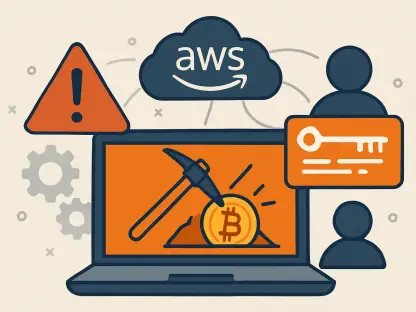The U.S. cybersecurity job market is experiencing substantial changes, driven by advancements in artificial intelligence (AI) and increasing regulatory demands. The 2025 U.S. Cybersecurity Job Posting Data Report by CyberSN provides an insightful overview of these changes, capturing job posting trends over the past few years. Key developments in various cybersecurity roles signify a shift in the employment landscape, affecting both traditional technical roles and emerging positions focused on governance and risk management.
Shifting Demand for Cybersecurity Roles
The Rise of Governance, Risk, and Compliance (GRC) Roles
An area experiencing significant growth is the demand for Cybersecurity/Privacy Attorneys, which saw a notable 40% increase in job postings over the past year. This trend underscores an expanding focus on governance, risk, and compliance (GRC) due to heightened regulatory pressures. Organizations are placing greater emphasis on implementing robust security policies, ensuring adherence to evolving regulations, and managing risks effectively. Such roles are crucial for navigating the complex landscape of cybersecurity laws and standards, making them pivotal in today’s security strategies.
Interestingly, this growth in GRC roles is not isolated but part of a broader strategic pivot within the cybersecurity profession. There is an observable shift towards roles emphasizing policy development and risk management. Hence, cybersecurity professionals with expertise in governance and compliance are now in high demand. These roles are vital for protecting organizational data and ensuring legal compliance in a rapidly changing regulatory environment. This focus on GRC signifies a proactive approach to preemptive threat management rather than reactive measures.
The Emergence of Offensive Security and Sales Roles
Another area witnessing increased interest is the realm of offensive security, with job postings for Red Teamers rising by 29%. These professionals simulate cyber-attacks to identify vulnerabilities within an organization’s defenses, assisting in strengthening overall security posture. This proactive approach to identifying and mitigating security gaps has become increasingly valuable in an era where cyber threats are more sophisticated and persistent.
Additionally, Cybersecurity Sales Engineers have seen a 26% rise in job postings, highlighting the growing market for security products and solutions. Their role is crucial in bridging the gap between technical cybersecurity solutions and business needs, making complex technologies accessible and appealing to potential customers. This rise reflects the commercialization of cybersecurity, where the demand for innovative security products is driving employment opportunities in this niche.
The Decline in Traditional Technical Roles
Impact of AI-Driven Security Automation
While the demand for certain roles has surged, others have experienced a notable decline. Positions such as Security Engineers, Security Analysts, and DevSecOps specialists have seen a steady drop in job postings. This decline is largely attributed to the advent of AI-driven security automation. AI technologies have enabled organizations to automate many routine security tasks, reducing the reliance on large internal teams for continuous monitoring and threat detection.
The automation of security processes has led to increased efficiency and cost-effectiveness in managing cybersecurity operations. However, it has also raised concerns about job displacement and the need for cybersecurity professionals to adapt to the changing landscape. The focus is shifting towards roles that require strategic oversight and the ability to manage automated systems, emphasizing the need for continuous learning and upskilling in AI and automation technologies.
Outsourcing and Its Effects on Cloud Security Roles
Cloud Security Engineer positions have seen a significant decrease, plummeting by 43% since 2022. Companies are increasingly streamlining cloud security functions within broader IT teams and relying on managed security services. This trend reflects a shift towards outsourcing and utilizing external security services to achieve cost efficiency and operational resilience. Outsourcing allows organizations to leverage specialized expertise while focusing their internal resources on core business functions.
While this approach offers several advantages, it also presents challenges in terms of maintaining control over security operations and ensuring effective communication with external providers. The decline in traditional technical roles emphasizes a need for cybersecurity professionals to evolve their skill sets, focusing on broader IT integration and strategic management of outsourced services.
Adapting to a Changing Cybersecurity Landscape
The Importance of Continuous Upskilling
Given the dynamic nature of the cybersecurity job market, professionals must prioritize continuous upskilling to stay relevant. Areas such as governance, compliance, and automation-driven security operations are becoming increasingly critical. Expertise in these domains will be invaluable in addressing modern cybersecurity challenges. Professionals should seek opportunities to enhance their knowledge in policy development, risk management, and AI-enhanced security solutions.
This proactive approach to professional development not only ensures career longevity but also aligns with the evolving needs of organizations. As cybersecurity threats become more complex, the ability to adapt and learn new technologies and methodologies will be essential for effective defense. Upskilling in emerging areas provides a competitive edge in a rapidly changing job market.
Strategic Leadership and Workforce Development
Organizations are now focusing on developing in-house talent and fostering strategic leadership roles. This approach aims to balance cost-efficiency with operational resilience. By investing in the professional growth of their workforce, companies can build a robust cybersecurity infrastructure capable of responding to evolving threats. Additionally, fostering strategic leadership within the cybersecurity domain ensures that organizations remain prepared to tackle regulatory changes and technological advancements.
Strategic leaders in cybersecurity are responsible for guiding their teams through complex challenges, implementing forward-thinking security policies, and ensuring compliance with regulations. Cultivating such leadership is essential for maintaining a resilient cybersecurity posture, emphasizing the importance of mentorship, training, and career development programs within organizations.
Future Considerations
The cybersecurity job market in the United States is undergoing significant changes driven by advancements in artificial intelligence (AI) and increasing regulatory demands. The 2025 U.S. Cybersecurity Job Posting Data Report, published by CyberSN, offers a detailed overview of these evolving trends in job postings over recent years. As AI evolves and regulatory frameworks tighten, the impact on cybersecurity roles is becoming more evident. This study reveals important shifts in employment patterns, affecting both traditional technical positions and new roles centered on governance and risk management. Professionals in the field are witnessing a dynamic transformation in their job opportunities, indicating a critical shift in focus within the industry. The changing landscape also underscores the importance of staying updated with the latest skills and knowledge to remain competitive. In summary, the CyberSN report highlights the necessity for ongoing adaptation to the rapidly evolving technical and regulatory environment in the cybersecurity job market.









